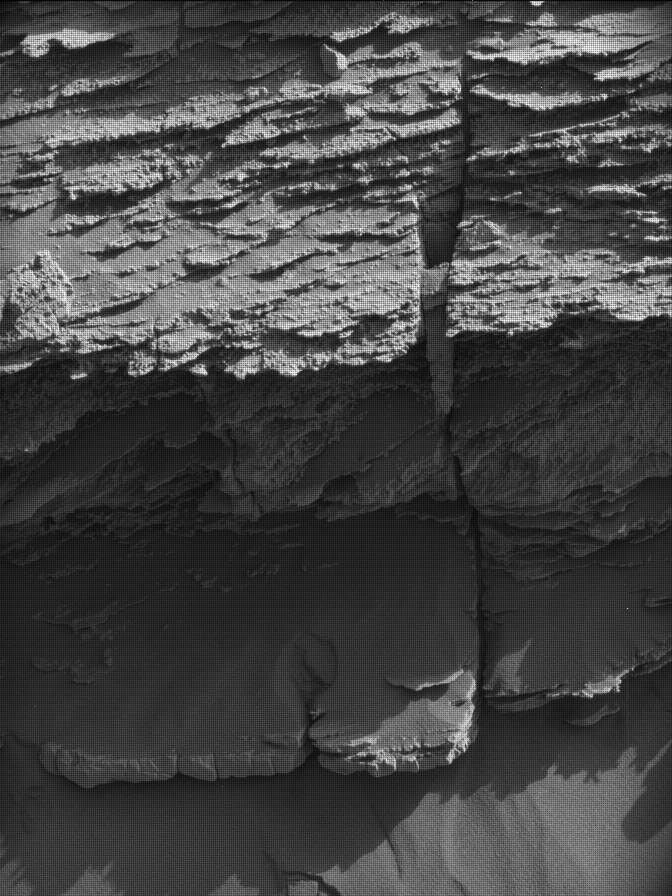On Tuesday, the science team had a "soliday", a day without planning to allow the time when the science team plans activities on Earth to realign favorably with when the rover is ready to accept and execute those plans. Our network, however, stayed on soliday through Wednesday morning, leaving the science team without access to the tools we use to plan activities! For most of planning, this was the only full image the science team had of the terrain in front of us.
Fortunately, the rover planners at JPL had a bit better luck, gaining access to enough Navcam and Hazcam images to plan a drive so that the rover did not have to spend the sol idle. The RPs were also able to plan drill diagnostics after the drive to keep investigating the state of the drill. JPL kept the science team posted over the phone - the one way we could communicate with one another. In the event the science team was not able to plan targeted observations, we made plans for basic untargeted post-drive observations that would record the terrain around us (systematically-acquired Mastcam and MARDI images, and an autonomously selected ChemCam target) and help us plan science the next sol (Navcam images of the terrain in front of us and to the starboard side of the rover to target ChemCam and Mastcam).
With just ten minutes to spare before the end of our planning window, our friends in the JPL IT department reestablished the network - it takes a village! The GEO and ENV groups *very* quickly added targeted observations to the already-planned untargeted observations. GEO added a Mastcam image of an autonomously selected ChemCam target shot on Sol 1671, and an 8x2 Mastcam mosaic of an outcrop hypothesized to represent a dry-lake period, parts of which were also studied over the last several sols. ENV planned DAN passive and active observations, and regular REMS and RAD measurements. The activities sailed through the rest of planning, the result of a true (science and engineering) team effort to keep Curiosity busy exploring Mars yet another sol!
Written by Michelle Minitti, Planetary Geologist at Framework



































